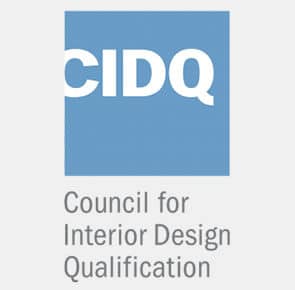Start your career path to becoming a certified interior designer today. Learn about the steps, classes and educational options you will need to become a successful interior design specialist. The team at University HQ strives to provide accurate and trustworthy rankings that highlight the best programs for interior design.
What Does a Career in Interior Design Entail?
As an interior designer, you’re going to be prepared to develop interior and possibly exterior spaces that are inviting to the people and organizations that use them. The spaces you create should reach out to touch the emotions and senses of the people that see and occupy them. This is the goal of interior design graduates, no matter their interior design degree level.
Interior design graduates should have a good, working knowledge of the structure of spaces, requirements, building codes, and health and safety issues of the residential homes, offices, and outdoor spaces they may design and bring to life. They also need to be highly familiar with materials, textiles, color or other media, sustainability or environmental analysis, graphic art design, and space planning of interior architecture and design, though they may gain some of this through work experience. An interior design degree prepares students for success in working with interior architecture and design and working with a client or consumer.
Featured Online Programs
How to Become an Interior Designer Online
What is an Interior Designer?
An interior designer creates functional, beautiful, and safe spaces for businesses, homes, and even exterior sites. If this is you, then you’ll be responsible for determining a location’s space requirements, looking for, and choosing the decorative accessories that will enhance the space’s natural beauty.
As you begin work on a new space, you’ll read blueprints and be knowledgeable about building codes and the regulations surrounding building inspections.
What is the Difference Between an Interior Designer and an Interior Decorator?
 An interior decorator is nothing like an interior designer. The interior design profession has work processes that are quite different from those of decorators.
An interior decorator is nothing like an interior designer. The interior design profession has work processes that are quite different from those of decorators.
As a designer, you work closely with clients and architects. You get to know your clients well, so you can understand what their design needs really are. Knowing this allows you to create a space that is the most optimal for their lives or business.
You’ll have to be able to read an architect’s blueprints so that you can sketch out floor plans and walls.
Typical Interior Design Degree Requirements
While your chosen major is artistic, it’s still rigorous, with many academic requirements:
- General education courses
- Design courses, to focus on interiors
- Visual Communication classes
- Interior Design Theory
- Construction courses, including a course on interior materials and assemblies
- Design practice (Professional focus)
- Interior Design History, to include the history of architecture
- Courses on environmental controls
- Human Behavior and learning to design for this
- Internship (required)
- Specified core curriculum courses
- Nontechnical physics
- Introductory Psychology (meets social and behavioral sciences requirement)
- Architecture of the world, from Industrial Revolution to the present
- Art History
- Electives
Typical Interior Designer Certification Needed
 After graduation, you’ll need to study some more so you can take your exam for state licensure. In several states across the U.S., interior designers can only work once they have taken a licensing exam (NCIDQ exam) and passed, then received a license from the licensing board in their state.
After graduation, you’ll need to study some more so you can take your exam for state licensure. In several states across the U.S., interior designers can only work once they have taken a licensing exam (NCIDQ exam) and passed, then received a license from the licensing board in their state.
During your last semester, you’ll begin checking out where to take a state-approved exam—this is usually the National Council for Interior Design Qualification, or NCIDQ. The licensing council requires test-takers to have at least a bachelor’s degree in interior design from an interior design program, plus two years of experience. You may be able to get the required two years’ experience during your internships and you may also be able to attend architecture and design course programs from a CIDA accredited design school.
Academic Standards for Interior Design Degrees
Interior designers holding a state license are real professionals. These interior designers meet with clients to help them solve issues within their office or home environments with their knowledge of interior architecture and design, fine arts, and design skill. The main expectation of this professional role is to help enhance a client’s quality of life.
This major means you are going to be exposed to, and learn things across, a wide range of disciplines. You’ll gain real-world work experience through your interactions with classmates and clients you meet in your internship(s).
Exam/Experience Needed for an Interior Design Degree
With your online bachelor’s or master’s interior design degree, along with your professional work experience, you’re ready to apply for your interior design certification examination.
First, you should obtain a copy of the application and carefully read the instructions. You may be able to find this on the NCIDQ website. Before you begin filling it out, look for the deadline and note this on your calendar. Gather all required documentation so you can make copies to send with your application. If you will be applying online, scan each document and save them in a folder.
Fill out your application and verify that everything is correct. Include all your documentation and send it in.
Pass your exam—you must pass every portion and finish the exam within the stated deadline to earn your certification.
It’s an excellent idea to continue participating in studio culture, which will enrich your learning and interior design work. Begin to create your portfolio and insert your best work samples.
Plan your job search early. Look for basic interior design jobs while you are on school breaks. Reach out to first-year interior design majors and mentor them on their academic paths.
Online Associate Degree in Interior Design
An online associate degree can take up to two years and 65 credits to complete. This course teaches you all the professional information you need to know before you begin your career as an interior designer. As you move through the program, you’ll be able to create your portfolio and find employment opportunities for after graduation. If you have past college experience in a different field, this is desirable, especially if you’ve been thinking of a career change. If you have plans to proceed further in your education as an interior designer, you will be able to do so.
Associate degree sample online courses
- Drawing, 2D
- Drawing Interiors, 3D
- Drawing
- Color Theory
- Color Theory
- Critical Reading and Writing
- Studio
- Studio
- Program elective
- Liberal Arts elective
- Construction Documents
- Histories and Theories, I
Online Bachelor’s Degree
As an online bachelors degree student in the interior design program, you’ll get one-on-one attention from your professors; you’ll also get guidance and education from instructors who are qualified industry professionals. You’ll learn elements of interior design (drafting, selection of furniture, fixtures and equipment, implementation of documents). You’ll also be exposed to other students’ experiences, which gives you the benefit of many points of view.
Online bachelor’s degree sample courses
- Construction Documentation and Contracts
- Manual Drafting and Computer Aided Design (CAD)
- Environmental and Human Behavior
- Space Planning
- Lighting Design
Concentrations for Online Master’s in Business include Computer Science, International Business, Finance, Human Resources Management, Healthcare Management, Marketing, Accounting, and Entrepreneurship.
Online Master’s Degree
In the Masters of Fina Arts (MFA) interior design program, you and your fellow students are trained to take the lead in the discussion and practice of interior design in this century. Design is considered as part of a social practice. As you take class after class, you will learn how to view design as a tool of change, environmental stewardship, and training experiences.
Design Studio, I
- Interior Design Survey
- Representation & Spatial Reasoning, I (Lecture)
- Representation & Spatial Reasoning, I (Recitation)
- Materials and Performance
Design Studio, II
- Theory of the Interior
- Ethnography and Design
- Fabrication and Processes
Design Studio, III
- Professional Practice
- Thesis Preparation
- Elective
Design Studio, IV
- Environmental Technology, I (Lecture)
- Environmental Technology, I (Recitation)
- Elective
- Thesis Seminar, II
Career and Salary Information
The farther you go through school, from a community college to a master’s-level program, your annual median pay will increase accordingly. If you’ve earned your online associate degree, you can anticipate earning close to between $750 and $1,000 weekly.
Find Online Interior Design Schools
As you move on to earn your online bachelor’s degree in any discipline, your weekly pay jumps to nearly $1,250. By the time you’ve earned your master’s degree, your weekly pay has leapt to more than $1,400. While your time in class, taking exams, and working in an internship may seem endless, your bottom line will thank you.
Designers with a bachelor’s degree can expect to earn $52,000; with a master’s, this jumps noticeably to $62,000.
Interior Design Salaries by Occupation
| Entry-Level | Mid-Career | |
|---|---|---|
| Interior Designers | $27,240 | $51,500 |
Concentrations at Bachelor’s, Master’s and PhD Levels
BACHELOR’S
Concentrations include:Interior Design, I (Architecture); Entrepreneurship; Principles of Marketing; Directed Study; Interior Design, II; Fundamentals of Management; Business Law; International Business
MASTER’S
MFA with concentration in Interior Environments - professional entry-level
PHD
PhD in Design, Environment, and the Arts with a concentration in Healthcare and Healing Environments
Interior Design Fields of Study, Median Salaries
Interior designers plan, design, and furnish offices, residences, and industrial buildings. As an interior designer, you also formulate and plan designs which are aesthetic, practical, and easy to use as intended.
Short Description on Each Occupation/Job for Your Given Degree Type Interior Design Occupations
Interior designers plan, design, and furnish offices, residences, and industrial buildings. As an interior designer, you also formulate and plan designs which are aesthetic, practical, and easy to use as intended.
-
Amusement and Theme Parks Designer
You blend the sights, sounds, smells, and fantasies of visitors to create an unforgettable, colorful experience that is in line with the theme of your park. Your designs are both temporary and permanent, depending on the goal of the theme park you are designing. -
Cruise Line and Private Watercraft Designer
In creating a floating community, you need to be attuned to creating interior spaces to give cruise ship passengers a set of amenities and sleeping accommodations. While they won’t spend much time in their rooms, you still want them to be attractive. You’ll also design lounges, restaurants, health clubs, spas, pools, art galleries, casinos, ballrooms, and exercise tracks. -
Stadiums and Arenas Designer
In creating stadiums and arenas, your design will be completely unlike that of a hotel, office building, or home. Your main concerns are acoustics, air quality, and sight lines. You need to include concession areas and security sites. -
Medical Offices Designer
Depending on the medical or dental specialty, you need to create exam rooms or dental care booths. Design for easy movement of personnel through the patient areas, while you include room for medical and dental equipment. If you choose this specialty, expect to travel throughout the country, working on the design of different dental or medical offices.
Salary by Occupation
| Job Category | Entry-Level Median Annual Salary | Mid-Career Median Annual Salary | Late Career Median Annual Salary |
|---|---|---|---|
| Interior Design | $40,400 | $55,200 | $60,600 |
Important Questions to Ask (FAQ)
How Long Does It Take to Earn an Interior Design Bachelor’s Degree Online?
If you decide that you are going to take your interior design degree coursework online, you should figure out how long it will take you to earn a bachelor’s degree, or whichever degree level you choose, online. Most online Bachelor of Science or Arts online degree programs online are self-paced, moving along at the pace you set. Your instructor will set deadlines for discussion groups, exams, and assignments. You may also be required to take part in an online lecture every week, where you’ll receive a new set of required assignments.
In general, courses last about 15 weeks during the fall and spring semesters. During summer sessions, courses may last 8-10 weeks. If you participate in each online lecture and finish your assigned work on time, you will move easily from semester to semester.
How Much Does an Interior Design Bachelor’s Degree Cost?
Depending on whether your classes are set up in semesters or quarters, current student's tuition costs will vary. For instance, some online interior design degree programs use quarters for each term. The tuition cost per credit often sits around $375, though this can be significantly higher if you attend a private program or specially focused interior design schools. Interior design programs often require each student to pass 180 hours to graduate and programs may cover 165 instructional weeks. By the final quarter, your total tuition may average around $67,500, not including fees and your estimated digital textbooks (on an e-reader).
Interior Design Online Bachelor’s Degree Coursework
Once you’ve completed all your general education classwork and gained acceptance into an interior design program, the hard work begins. Depending on your university or interior design school's program, you may be working in the architectural department because interior architecture and design are closely related.
In your first year, you’ll begin with basic design courses and interior design classes. Even your communication courses will be visual. Next, you might take a design theory class, a fine arts course, and a few construction classes as well, which focus more on the interior materials and assemblies. You may also have a class on environmental analysis along with your interior architecture and design course.
Your classwork progresses into interior design practice, where you begin working on the actual practice of designing interiors. Then interiors and society, design history, and history of architecture. Some of your classes may be more difficult as you move into environmental controls (acoustics, lighting, electrical and information systems in architectural interiors). Sometime in this term, you’ll also work on design for human behavior (privacy, mood, perception, and individual preferences).
You’ll also take elementary physics, which is geared toward students who aren’t majoring in natural sciences. Finally, you’ll finish with world architecture, spanning the Industrial Revolution to current times. Round out your other requirements with art history, electives, and any additional core curriculum classes you need before graduating.
Does the School Have the Major You’re Considering?
You know you want to major in interior design. Before you commit yourself and enroll in a university program, double-check to make sure it carries interior design as a major. Once you determine which schools offer interior design as a major, check for its rankings and accreditation.
How Many Students Graduate “On Time” in Four Years?
 While universities plan out their majors so that students can graduate within four years, different factors can affect that goal for students. You don’t want to miss this goal. Universities and interior design professors structure their programs so you’re able to take your general education courses and your required interior design classes within the allotted time.
While universities plan out their majors so that students can graduate within four years, different factors can affect that goal for students. You don’t want to miss this goal. Universities and interior design professors structure their programs so you’re able to take your general education courses and your required interior design classes within the allotted time.
To assist yourself so you graduate within four years, listen closely to your advisers and take a full-time load every semester. Visit your registrar’s office and request degree audits as you get closer to graduation. This will help you to spot deficiencies in your academic program. If you do spot any, plan to correct them during a summer session.
Interior design professors and administrators tweak their curricula from year to year. What was offered two years or even one year ago won’t apply today, so don’t rely on old catalogs. Always work from a current-year catalog. This way, you know what classes you’re supposed to be taking now or planning for future semesters.
What Kinds of Accreditation Does the Online Program Hold? How is it Regarded in the Field?
Accreditation is vital to every academic program and student. This is a status that’s conferred on an academic program to indicate that it meets or exceeds current educational criteria and quality. Accreditation agencies examine programs at universities seeking new accreditation or to renew an existing accreditation. These agencies and academic institutions want to be consistent in their programs and curricula. This allows you to know that what you are learning is the latest material.
Accreditation also serves to encourage academic and institutional improvement. Universities and colleges can receive institutional accreditation, which covers the entire institution. Regional accrediting agencies cover different regions of the U.S.
Program accreditation is aimed solely at a single program, such as interior design. This is a professional level accreditation, ensuring that educational requirements are met or exceeded. Programs receiving accreditation are placed onto a published list, which helps prospective majors to decide which to choose. Once you have graduated, you’ll be required to have your official transcripts sent to employers who are interested in you. They will check your transcripts and your interior design program to look for evidence of accreditation. Your eventual salary may benefit from this.
Software/Technology/Skills Needed
As an interior design major, you are very likely required to have a laptop with specific software. Many of the design assignments you get will have to be completed by using this software. You’ll be given a short list of required software programs—you may also be informed of suggested software. When purchasing software, always get the most recent releases available. Your university should have an IT office where you can ask about software pricing.
As an interior design major, you’re an artist working in an artistic field. Here are some of the skills you will require:
- Knowledge of sustainable practices: These allow you to use eco-friendly products and practices.
- Creative eye, with good attention to detail: Creativity allows you to come up with ideas others may not consider. Focus on small details so everything is balanced and welcoming.
- Trend identification: Being able to identify short-lived trends and predicting when they will become old, helps you to stay current with new interior design practices.
- Good computer knowledge and ability to sketch well: The ability to use a CAD program provides representations of how a space will look. Artistic sketching ability means you can use paper and pencil to communicate your ideas artistically.
- Excellent communication skills: Verbal and written—you’ll be interacting with your employer, designers, and clients all the time. Don’t forget about communicating with professionals and contractors as well.
- Organizational ability: You’re expected to complete your assigned projects in a timely manner and within the given budget. Your client won’t be happy to see you going over-budget or missing deadlines. Of course, delays and higher costs are beyond your control, but try to keep these to a minimum. In fact, if you can, build extra time into your planning.
Interior Design Scholarships
Universities and colleges with interior design programs may have scholarships for students majoring in this discipline. Because you are interested in this career, you need to know what scholarships are available:
-
Carroll King Mathews Sustainable Design Scholarship
This scholarship is intended for full-time undergraduate students in the ID program. Students who have received this scholarship in the past may reapply. You must submit your scholarship application form along with a letter that explains how the funds will be used, if you win. They must be used to fund your interest in sustainable design (a senior project, for instance). -
Eugene W. Bets Endowed Scholarship Fund in Architecture
This scholarship supports graduate-level architecture students. Preference is given to students who are considering practicing and building a career in healthcare related facilities. -
Harris Foruez and Ido deGroot Scholarship
This scholarship was created in the memory of two DAAP University of Cincinnati faculty members. Scholarships are provided to undergraduate and graduate students who are enrolled in Community Planning, Architecture, or Urban Planning. Deserving students are chosen on academic merit and financial need. Undergraduates should be in the final two years of the program and graduate students should be in their last year of study.
Professional Interior Design Organizations
- ASID
- CIDQ
- IDEC

ASID
American Society of Interior Designers (ASID)
ASID works with others, promoting the value of interior design. Members are encouraged to excel in this growing and dynamic profession. Education, advocacy, and community building all combine to keep interior design in the sights of the public. Members celebrate and demonstrate the power of design.

CIDQ
Council for Interior Design Qualification (CIDQ)
The main purpose of the National CIDQ is to ensure the safety, health, and welfare of the public are protected. High standards are maintained, ensuring that designers demonstrate competence in the field. Those designers who have met minimum standards by passing the NCIDQ exam are certified, so they can work in this field.

IDEC
Interior Design Educators Council, Inc. (IDEC)
This organization is dedicated to the support of education and research in interior design. The members of this organization encourage the exchange of information, educational standards, and development of the field of knowledge related to quality of life and human performance in this field.
Choosing an Accredited Online College
Accreditation is a process and status given to colleges, universities, and programs to ensure that their educational offerings exceed the given standard of quality. It helps to enhance the quality of an institution, help promote improvement, and provide for public accountability.
The Council for Interior Design Accreditation (CIDA) is a non-profit and independent accreditation organization, examining interior design educational programs at universities and colleges in the U.S. and internationally.
Programs evaluate themselves, inviting peer review in the pre-accreditation process. Accreditation works to help make individual programs more accessible to current and future students.
Online vs. On-Campus vs. Hybrid
With traditional education, you get a set, stable class schedule. You know where you need to be on a given day at a given hour. With online learning, that’s not the case, but you get added flexibility. You’ll still have set days and times when assignments are due, tests or quizzes are given or when you take part in forum discussions.
To successfully complete a 100% online program, you need plenty of self-motivation and discipline. Calendar planning and self-rewards can help when your motivation flags. You do lose the opportunity for social interaction with an online program. It’s a solo quest, except for those times when you interact with fellow students (Discussions or forums).
With hybrid university courses, you get a little of both worlds. Some work will be delivered and submitted online while other sessions take place in a physical classroom.
Frequently Asked Questions
What’s the difference between interior design and interior decorating?
Well, interior decorating is often what we think of when we consider changing our homes for the various seasons, or what happens when we decorate a home or apartment to our liking. An interior decorator might suggest you buy new furniture, change out a light fixture, or throw some pillows on the couch. However, an interior designer might suggest you take out the wall blocking the hallway from the dining room, put in some new French doors where the window currently stands so that you can more easily make use of your outdoor space, or raise the ceiling in that attic renovation to increase your headroom. An interior designer might work with new construction or be part of a major redesign for an old building, but they rarely worry about furniture, color schemes, or the like.
What else can you do with a design degree?
If you choose not to spend your entire career working with architects creating or reworking spaces, then you might instead choose to get into other positions that require design knowledge. This might be packaging design, product design, or even public spaces design or city planning. Whatever you choose to do, you will have the knowhow to design like a pro.
Does the College have Post-Graduate Job Placement Help and Assistance?
Most universities, though not all, have a Career Services office, where current and soon-to-graduate students can request help.
You may be eligible to access a job board for your interior design major if you have satisfactorily completed a set number of credits. This service can also be available to alumni for up to five years post-graduation. You may need your student number to gain access.
Your Career Services office may also perform outreach to local industries to create internships.
Why You Need to Consider How the Rating/Accreditation can Affect Your Salary
Accreditation means that the university and interior design program you’re considering has been evaluated down to the smallest detail. If a program isn’t accredited, you can’t apply for financial aid to pay for the classes—it’s that important.
Rankings are different. They’re important, because you get an idea of how university and interior design programs rank against one another throughout your country or region. And you’re not the only one with access to this information. Your future employers will also know how your college or university was ranked.
Search All Programs
